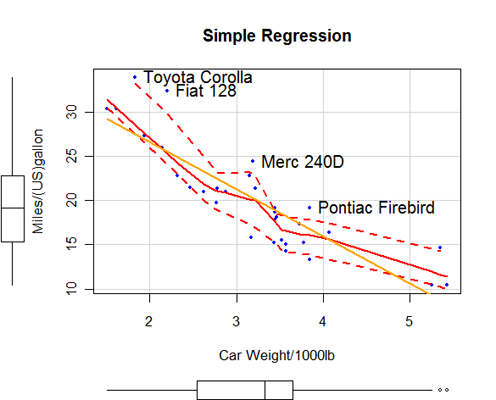Basic Statistics

This section describes basic (and not so basic) statistics. It includes code for obtaining descriptive statistics, frequency counts and crosstabulations (including tests of independence), correlations(pearson, spearman, kendall, polychoric), t-tests (with equal and unequal variances), nonparametric tests of group differences (Mann Whitney U, Wilcoxon Signed Rank, Kruskall Wallis Test, Friedman Test), multiple linear regression (including diagnostics, cross-validation and variable selection), analysis of variance (including ANCOVA and MANOVA), and statistics based on resampling.
Since modern data analyses almost always involve graphical assessments of relationships and assumptions, links to appropriate graphical methods are provided throughout.
It is always important to check model assumptions before making statistical inferences. Although it is somewhat artificial to separate regression modeling and an ANOVA framework in this regard, many people learn these topics separately, so I've followed the same convention here.
Regression diagnostics cover outliers, influential observations, non-normality, non-constant error variance, multicolinearity, nonlinearity, and non-independence of errors. Classical test assumptions for ANOVA/ANCOVA/MANCOVA include the assessment of normality and homogeneity of variances in the univariate case, and multivariate normality and homogeneity of covariance matrices in the multivariate case. The identification of multivariate outliers is also considered.
Power analysis provides methods of statistical power analysis and sample size estimation for a variety of designs.
Finally, two functions that aid in efficient processing (with and by) are described.
More advanced statistical modeling can be found in the Advanced Statistics section.
Going Further
To practice statistics in R interactively, try this course on the introduction to statistics.